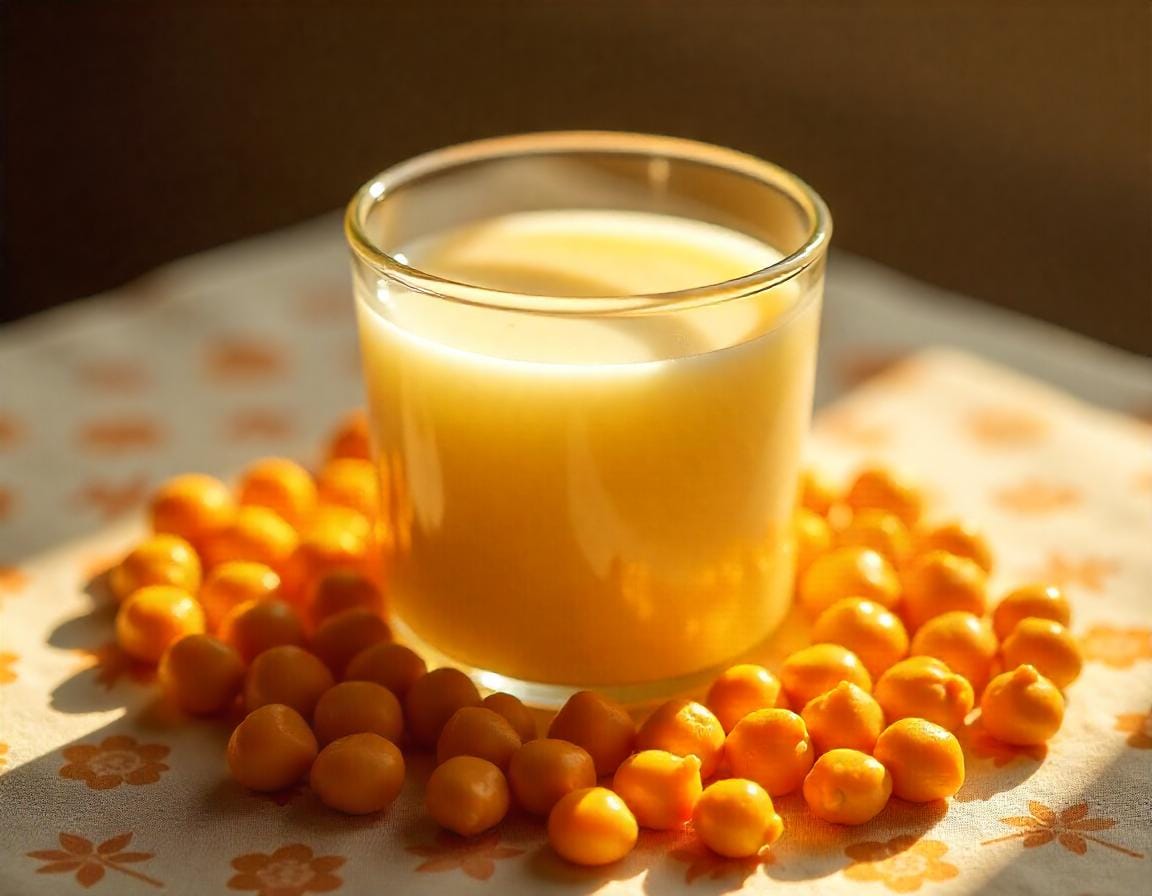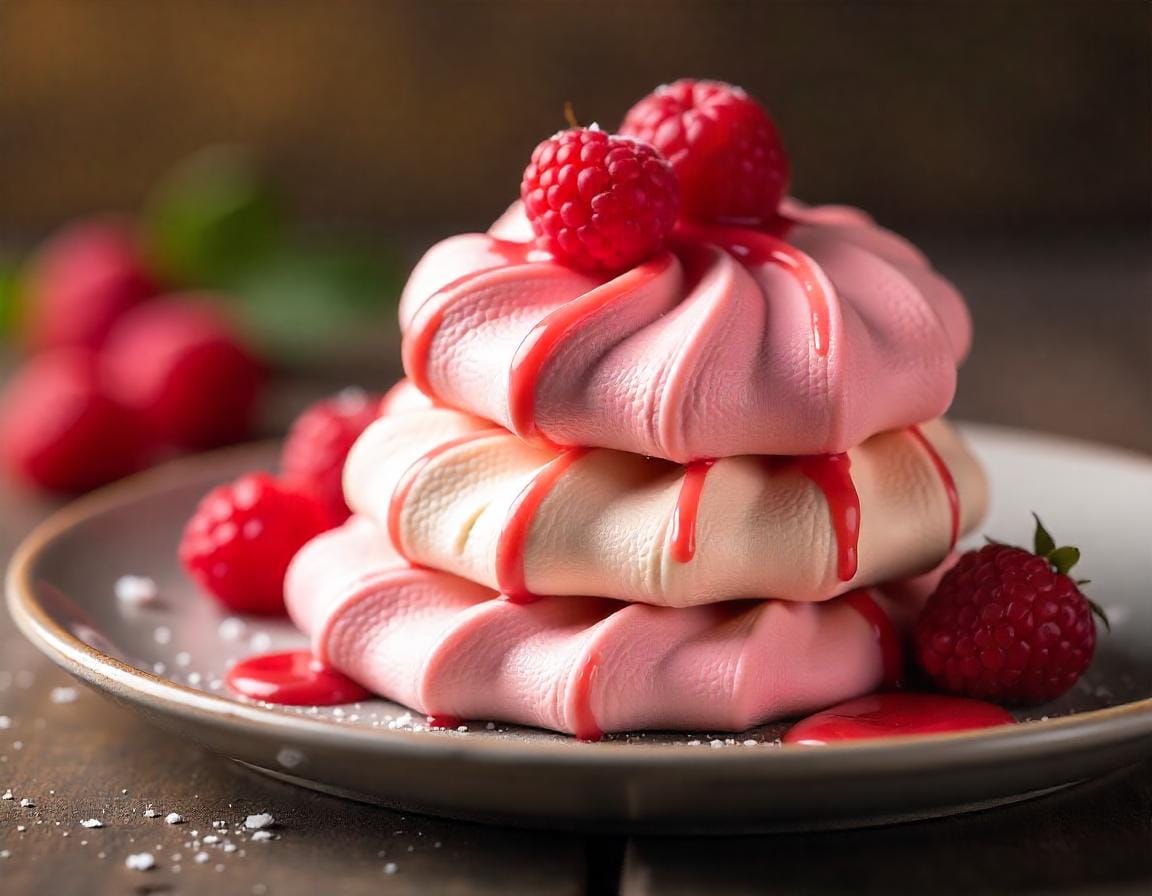Aquafaba desserts are revolutionizing the world of vegan cooking, offering an unexpected solution to a longstanding problem: the absence of eggs in plant-based recipes. Derived from the liquid of cooked chickpeas, aquafaba is not just an egg substitute, it’s a game-changer in both vegan and allergy-friendly cooking. Whether you are a seasoned vegan baker or simply curious about plant-based alternatives, understanding aquafaba and its uses can open the door to a world of delicious desserts and dishes.
In this detailed guide, we’ll explore the history, science, benefits, and potential of aquafaba, provide some easy-to-follow recipes, and highlight its growing role in sustainability and health-conscious cooking. Let’s dive into the wonderful world of aquafaba!
Introduction to Aquafaba: What It Is and Why It’s Important

Aquafaba is the liquid left behind after chickpeas or other legumes are cooked. It’s often referred to as “chickpea water” and has gained significant attention in the culinary world due to its impressive ability to replace eggs in recipes. For vegans, those with egg allergies, or anyone seeking plant-based alternatives, aquafaba offers an innovative way to mimic the functionality of eggs, particularly in recipes requiring egg whites.
The best part? Aquafaba is free of cholesterol, fat, and gluten, making it a highly versatile and healthier alternative to traditional egg-based ingredients in cooking.
The History of Aquafaba: A Modern Culinary Discovery
While aquafaba has only recently risen to fame in the vegan community, its use dates back centuries in various forms. In ancient times, people likely used legume-based liquids for various purposes, but it wasn’t until 2014 that aquafaba was recognized as an ingredient with egg-replacing properties.
A Frenchman named Joël Roessel is credited with discovering the egg-replacing potential of aquafaba. He was experimenting with chickpea water as a binding agent and soon found that it could mimic the texture and behavior of egg whites, including foaming, emulsifying, and binding. The discovery was shared widely through online forums and soon became a staple in plant-based cooking.
The Science Behind Aquafaba: How and Why It Works
The secret to aquafaba’s success lies in its chemical properties. The liquid contains proteins, starches, and other molecules that, when whipped, form foam similar to that created by egg whites. The proteins in aquafaba are highly soluble, allowing them to bind with the starches in the water. This creates the stability needed to mimic the functions of eggs in baking and cooking.
When whipped, aquafaba can form soft or stiff peaks, just like egg whites, making it an excellent ingredient for recipes like meringues, mousses, and even cakes. It also has excellent emulsifying properties, meaning it can help bind ingredients together—much like eggs do in traditional baking recipes.
How to Make Aquafaba at Home
Making aquafaba at home is incredibly simple. Here’s a step-by-step guide on how to prepare it from scratch:
1. Using Canned Chickpeas:
- Open a can of chickpeas and drain the liquid into a clean container. This is your aquafaba.
- The liquid may look thin at first, but it will thicken once whipped. You can also refrigerate it to thicken it further if needed.
2. Using Dried Chickpeas:
- Soak 1 cup of dried chickpeas overnight in water.
- After soaking, drain the chickpeas, and cook them in a pot with fresh water, bringing it to a boil and then simmering for about 45 minutes.
- Once cooked, strain the liquid, which is your homemade aquafaba.
- For thicker aquafaba, continue simmering the liquid until it reduces.
Once prepared, you can use the aquafaba immediately or store it in the refrigerator for up to a week. It can also be frozen for later use.
Health Benefits and Nutritional Information of Aquafaba
Aquafaba offers several health benefits that make it a popular choice for those looking to reduce their intake of animal products or improve their diet. Here’s why it’s gaining so much attention:
Low in Calories and Fat-Free: Aquafaba is extremely low in calories and contains no fat, making it an ideal ingredient for those seeking healthier alternatives without sacrificing taste or texture.
Cholesterol-Free: Unlike eggs, aquafaba is cholesterol-free, which is beneficial for those trying to lower their cholesterol levels or maintain heart health.
High in Protein: Aquafaba contains proteins that help build and repair tissues, and it serves as a good source of plant-based protein for vegans and vegetarians.
Egg Allergy Friendly: Since it’s plant-based, aquafaba is a great substitute for individuals with egg allergies, allowing them to enjoy desserts like meringues and cakes without concern.
Gluten-Free: Aquafaba is naturally gluten-free, which is beneficial for those with gluten sensitivities or celiac disease.
Aquafaba in Cultural Shifts: The Rise of Plant-Based Desserts
Aquafaba’s popularity has grown alongside the rise of veganism, a global movement towards plant-based living that focuses on sustainability, ethical food production, and environmental consciousness. This cultural shift has led to more creative and accessible alternatives to traditional animal-based ingredients.
Aquafaba has also become an emblem of resourcefulness in cooking, transforming what was once considered a discardable byproduct into a valuable ingredient in the kitchen. It symbolizes a creative and innovative approach to reducing food waste and making the most of plant-based ingredients.
As more people choose plant-based diets for health, ethical, and environmental reasons, aquafaba plays a key role in expanding the variety of desserts and dishes available to those seeking alternatives to dairy and eggs.
Where to Buy Aquafaba and Its Products
If you’re not keen on making aquafaba at home, it’s easy to find at most grocery stores. Aquafaba is typically sold in the form of canned chickpeas or other legumes, but you can also find powdered aquafaba in specialty health food stores or online retailers. The powdered version offers the convenience of having aquafaba ready to use without the need to drain chickpeas.
Additionally, there are several brands that sell prepared aquafaba in liquid form, often packaged in cartons, similar to other plant-based milk products. Some vegan and allergy-friendly brands also offer aquafaba-based products, like vegan meringues and mousse, which make it even easier to incorporate this ingredient into your meals.
Top Aquafaba Desserts: Delicious Recipes to Try

Aquafaba is incredibly versatile in the kitchen, and it can be used to create a wide range of delicious desserts. Here are some of the most popular ways to incorporate aquafaba into your baking:
1. Vegan Meringue
Aquafaba is best known for its ability to create light, airy meringues. Simply whip the aquafaba with sugar and a bit of vanilla extract, then pipe it onto a baking sheet and bake for a crispy, melt-in-your-mouth treat.
2. Aquafaba Chocolate Mousse
For a rich and creamy dessert, whip aquafaba with melted chocolate, sugar, and vanilla to create a luscious, dairy-free mousse that rivals traditional chocolate mousse made with eggs and cream.
3. Vegan Macarons
With a bit of practice, you can use aquafaba to make delicate, crisp macarons. The whipped aquafaba creates the perfect texture for this sophisticated French dessert.
4. Egg-Free Brownies
Aquafaba can be used in brownie recipes to create moist, fudgy treats without eggs. It binds the ingredients and adds richness, making these brownies just as indulgent as their egg-based counterparts.
5. Vegan Cakes
Whether you’re making cupcakes or a large cake, aquafaba is a great substitute for eggs, providing moisture and fluffiness. The result is a soft, light cake that’s completely vegan.
Conclusion: Embrace the Aquafaba Revolution
Aquafaba is more than just a trend; it’s a revolutionary ingredient in the world of vegan and allergy-friendly cooking. Its versatility, health benefits, and ability to replace eggs in numerous recipes make it a must-have ingredient for anyone looking to explore plant-based desserts.
As the demand for plant-based alternatives grows, aquafaba is leading the charge, helping to reduce food waste, promote sustainability, and offer a healthier option for those avoiding eggs. Whether you’re a professional baker or a home cook, aquafaba provides endless possibilities for creating delicious, cruelty-free treats.
Start Using Aquafaba Today!
Ready to explore the endless possibilities of aquafaba in your kitchen? Whether you’re whipping up a batch of meringues, making a rich chocolate mousse, or creating moist vegan cakes, aquafaba is the key ingredient to unlock your culinary creativity. Don’t wait—start experimenting with aquafaba in your next recipe and experience the magic for yourself!
FAQs About Aquafaba
Can I use aquafaba from other legumes besides chickpeas?
Yes, aquafaba can be made from other legumes, such as white beans or lentils. However, chickpeas are the most commonly used because their liquid tends to have the best texture and stability.
How much aquafaba do I need to replace one egg?
Typically, three tablespoons of aquafaba can replace one egg. For recipes that require egg whites, you may need to whip the aquafaba to form stiff peaks.
Is aquafaba safe for people with chickpea allergies?
Aquafaba is made from chickpeas, so it is not recommended for those with chickpea allergies. However, alternatives like aquafaba from white beans can be used.
Can I store aquafaba?
Yes, you can store aquafaba in the fridge for up to a week, or freeze it for longer storage.
Does aquafaba taste like chickpeas?
No, aquafaba has a neutral flavor, which makes it perfect for both sweet and savory recipes.



